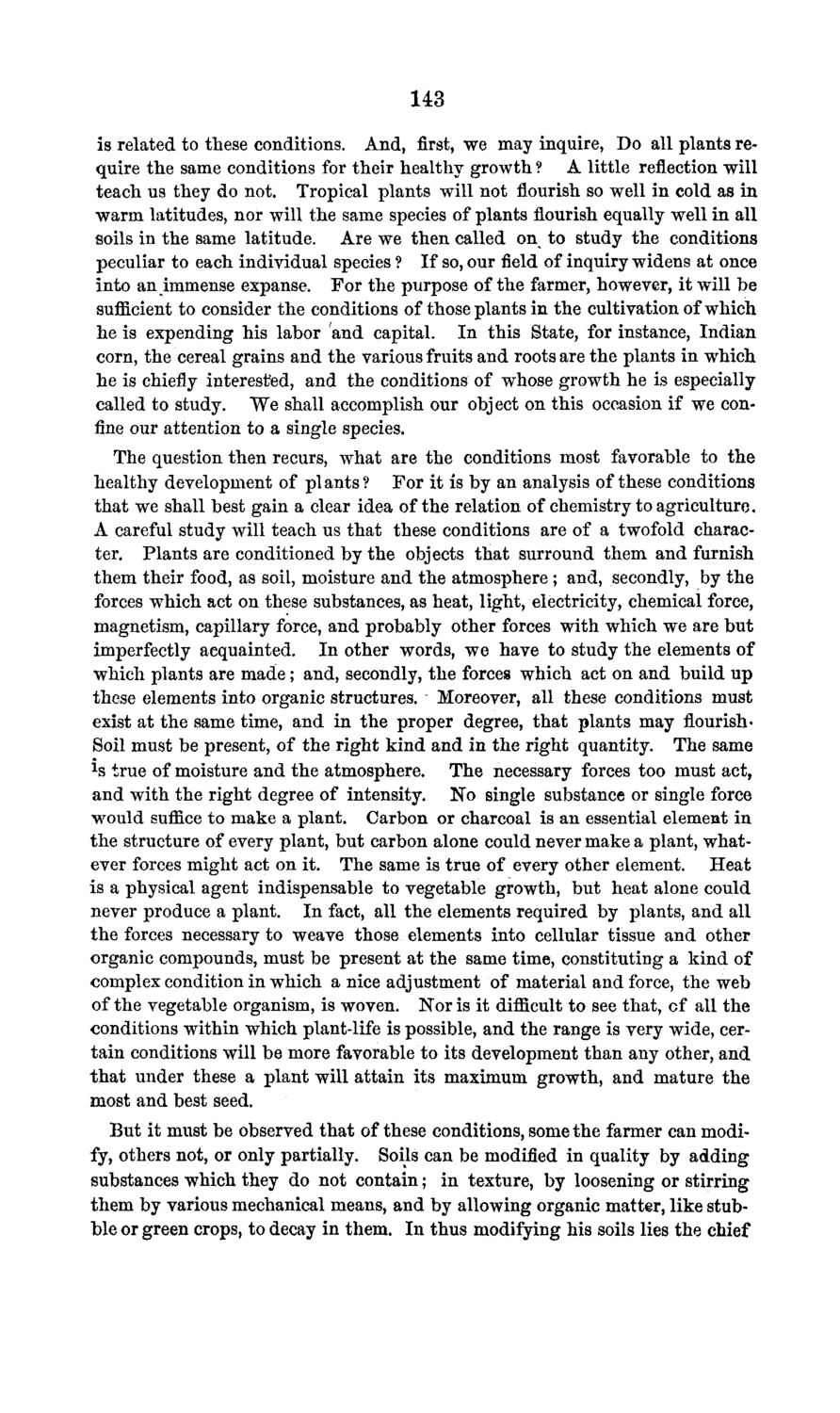| |
| |
Caption: Board of Trustees Minutes - 1869
This is a reduced-resolution page image for fast online browsing.

EXTRACTED TEXT FROM PAGE:
143 is related to these conditions. And, first, we may inquire, Do all plants require the same conditions for their healthy growth ? A little reflection will teach us they do not. Tropical plants will not flourish so well in cold as in warm latitudes, nor will the same species of plants flourish equally well in all soils in the same latitude. Are we then called on% to study the conditions peculiar to each individual species ? If so, our field of inquiry widens at once into an immense expanse. For the purpose of the farmer, however, it will be sufficient to consider the conditions of those plants in the cultivation of which he is expending his labor and capital. In this State, for instance, Indian corn, the cereal grains and the various fruits and roots are the plants in which he is chiefly interested, and the conditions of whose growth he is especially called to study. "We shall accomplish our object on this occasion if we confine our attention to a single species. The question then recurs, what are the conditions most favorable to the healthy development of pi ants ? For it is by an analysis of these conditions that we shall best gain a clear idea of the relation of chemistry to agriculture. A careful study will teach us that these conditions are of a twofold character. Plants are conditioned by the objects that surround them and furnish them their food, as soil, moisture and the atmosphere ; and, secondly, by the forces which act on these substances, as heat, light, electricity, chemical force, magnetism, capillary force, and probably other forces with which we are but imperfectly acquainted. In other words, we have to study the elements of which plants are made; and, secondly, the forces which act on and build up these elements into organic structures. Moreover, all these conditions must exist at the same time, and in the proper degree, that plants may flourish* Soil must be present, of the right kind and in the right quantity. The same J s true of moisture and the atmosphere. The necessary forces too must act, and with the right degree of intensity. No single substance or single force would suffice to make a plant. Carbon or charcoal is an essential element in the structure of every plant, but carbon alone could never make a plant, whatever forces might act on it. The same is true of every other element. Heat is a physical agent indispensable to vegetable growth, but heat alone could never produce a plant. In fact, all the elements required by plants, and all the forces necessary to weave those elements into cellular tissue and other organic compounds, must be present at the same time, constituting a kind of complex condition in which a nice adjustment of material and force, the web of the vegetable organism, is woven. Nor is it difficult to see that, cf all the conditions within which plant-life is possible, and the range is very wide, certain conditions will be more favorable to its development than any other, and that under these a plant will attain its maximum growth, and mature the most and best seed. But it must be observed that of these conditions, some the farmer can modify, others not, or only partially. Soils can be modified in quality by adding substances which they do not contain; in texture, by loosening or stirring them by various mechanical means, and by allowing organic matter, like stubble or green crops, to decay in them. In thus modifying his soils lies the chief
| |